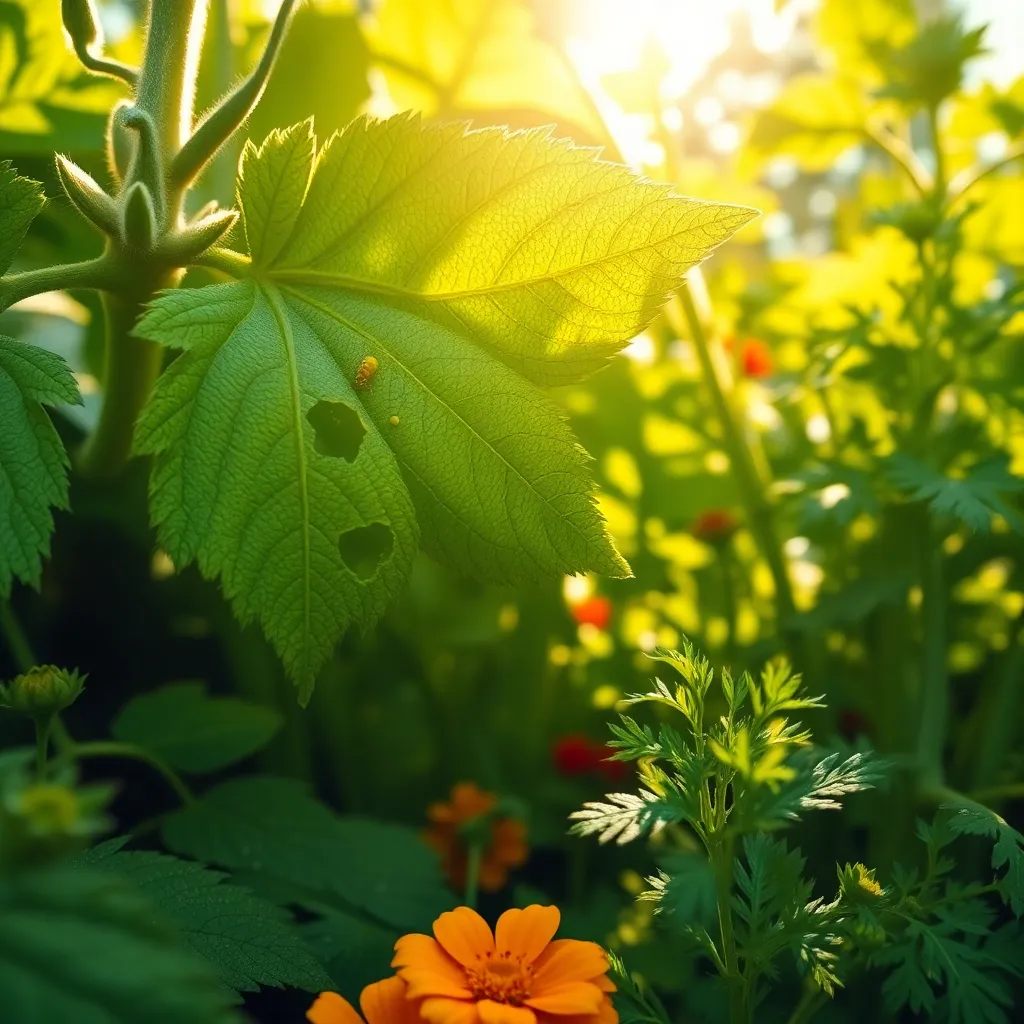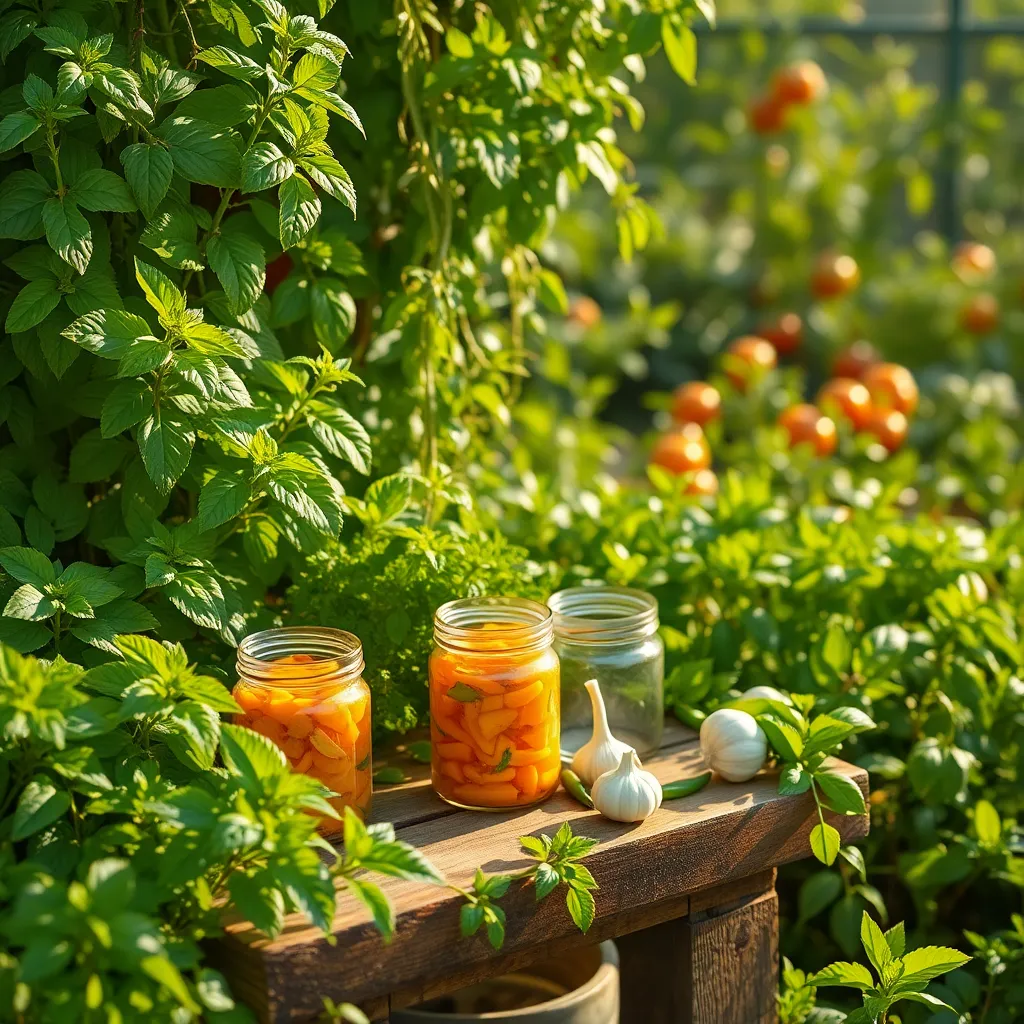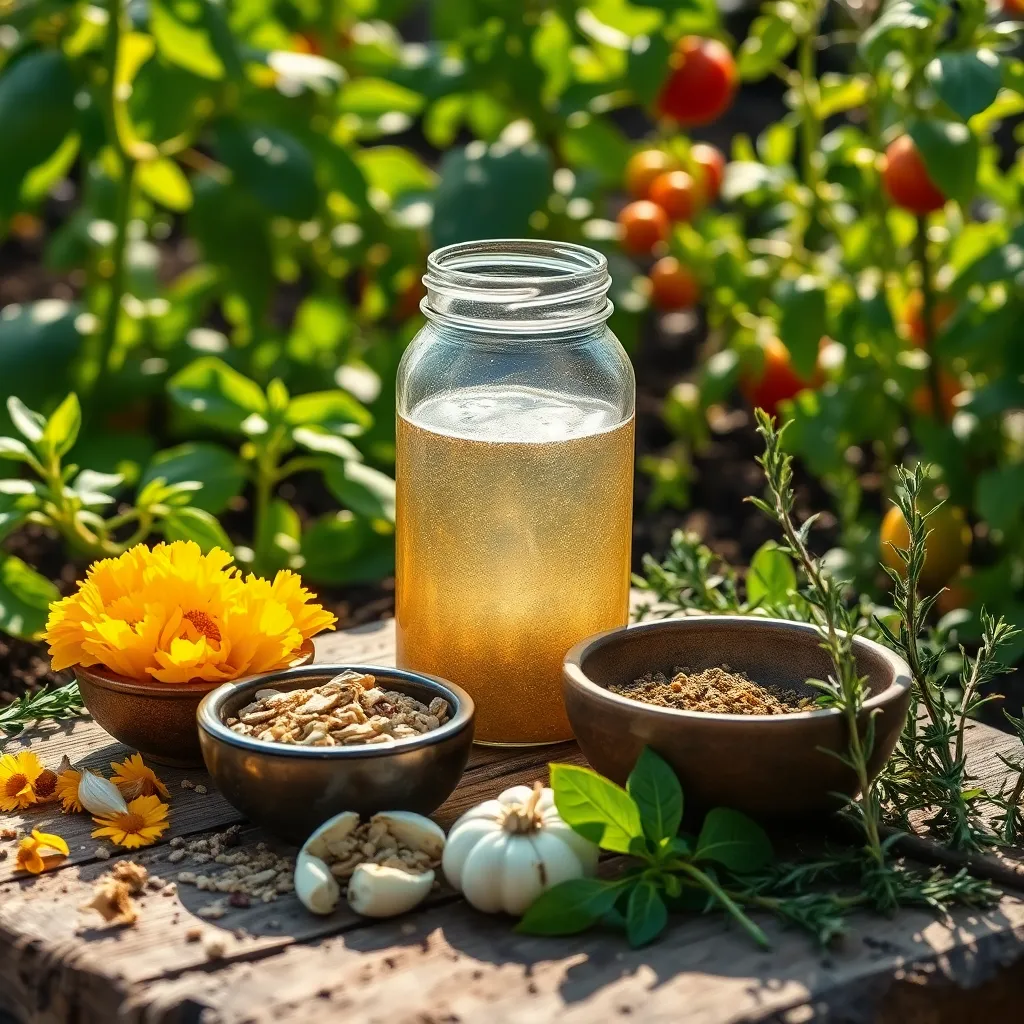In the serene world of gardening, every plant tells a story, but sometimes unwanted characters—pests—can disrupt the narrative. For both budding gardeners dipping their toes into this verdant art and seasoned horticulturists tending to their flourishing green spaces, understanding how to protect plants naturally is crucial. Embracing natural pesticides not only shields your garden from these pesky invaders but also nurtures a healthier, more sustainable environment. Whether you’re just starting your gardening journey or have a history of green-thumb triumphs, there’s always something new to learn about keeping your plants both vibrant and pest-free.
By choosing natural pesticides, you’re opting for an eco-friendly and effective solution that respects the delicate balance of your garden’s ecosystem. In this article, we’ll delve into the world of natural pest control, equipping you with the knowledge to craft your own solutions using everyday ingredients. You’ll discover how common kitchen staples can be transformed into powerful allies in your fight against pests, proving that sometimes the best remedies are right under our noses. Along the way, we’ll share tips and tricks that cater to gardens of all sizes, ensuring that your sanctuary remains a haven for plants and beneficial insects alike.
As we explore the art of making natural pesticides, you’ll gain confidence in your ability to tackle pest problems without resorting to harsh chemicals. We’ll guide you through simple, actionable steps that promise to safeguard your plants while being kind to the planet. By the end of this article, you’ll be well-equipped to create a garden that thrives in harmony with nature, celebrating the beauty of a pest-free, chemical-free environment. So grab your gardening gloves and a dash of curiosity—let’s embark on this exciting venture together, making your garden a vibrant, resilient paradise.
Identify Targeted Pest Species

Understanding the specific pests affecting your garden is crucial for creating effective natural pesticides. Start by observing which plants are being damaged and look for signs like holes in leaves, wilting, or discoloration, which can help pinpoint the culprit.
Next, inspect the plants closely, ideally during early morning or late afternoon when pests are most active. Use a magnifying glass to identify small insects and check the undersides of leaves, as many pests, like aphids and spider mites, tend to hide there.
Once you have identified the pest, research its habits and lifecycle to target it more effectively. For example, if dealing with slugs, you might focus on creating barriers or traps, as they thrive in moist, shaded areas.
To enhance your pest identification skills, consider keeping a gardening journal where you can record observations and compare notes over time. This practice not only helps in recognizing patterns but also in developing a more targeted and efficient pest management strategy.
Select Effective Natural Ingredients

When crafting natural pesticides, selecting effective ingredients is crucial to their success. Garlic is a powerful option due to its strong odor, which repels a variety of insects such as aphids and beetles. Beginner gardeners can easily make a garlic spray by crushing a few cloves and mixing them with water. For an advanced twist, consider adding a small amount of mineral oil to enhance the spray’s effectiveness.
Another excellent natural pesticide ingredient is neem oil, derived from the seeds of the neem tree. It acts as an insect growth regulator, making it especially useful against pests like caterpillars and whiteflies. Mix neem oil with a small amount of liquid soap and water to create a potent spray. Experienced gardeners may choose to apply it during the early morning or late afternoon to avoid harming beneficial insects.
Chili peppers are also used to deter pests, thanks to their heat-producing compound, capsaicin. To create a spicy deterrent, blend fresh chilies with water and strain the mixture before spraying. It’s a straightforward process suitable for beginners looking to protect their plants from chewing insects. Those with more experience might ferment the peppers for a few days to increase the mixture’s potency.
Diatomaceous earth offers a non-toxic way to manage pests by damaging their exoskeletons. This fine powder is sprinkled directly onto soil or plant leaves, providing a barrier against crawling insects. Be sure to apply it after watering or rain to ensure it remains effective. Advanced gardeners might use it in combination with other natural ingredients for a multi-faceted approach to pest control.
Prepare Ingredients for Mixing

Once you’ve selected your natural ingredients, it’s time to prepare them for mixing. Begin by gathering clean containers and tools, ensuring they are free of any chemical residues that could compromise your pesticide’s effectiveness.
Chop or grind your ingredients to increase their surface area, enhancing their potency when mixed. For example, finely mincing garlic cloves or crushing dried chili peppers will help release their active compounds.
Measure each ingredient carefully according to your chosen recipe, as the right proportions are crucial for an effective blend. Use a kitchen scale or measuring spoons to maintain accuracy, especially when dealing with potent substances like neem oil or diatomaceous earth.
It’s essential to wear protective gloves and possibly goggles when handling certain ingredients to avoid skin irritation. Some natural substances can be surprisingly potent, so take precautions to protect yourself while preparing them.
Mix Ingredients Thoroughly

After preparing your ingredients, it’s time to move on to the mixing process. Thorough mixing is crucial to ensure that your natural pesticide is effective and evenly distributed when applied to plants.
Begin by using a clean spray bottle or garden sprayer to combine your prepared ingredients. Use a funnel to avoid spills and ensure that all components are added in the right proportions.
For best results, shake or stir the mixture vigorously for at least one to two minutes. This helps to fully integrate the ingredients, ensuring that the active properties are evenly dispersed throughout the solution.
Consider adding a drop of gentle dish soap to the mixture as a surfactant. This will help the solution adhere better to plant leaves, increasing its effectiveness against pests.
Once mixed, test your pesticide on a small section of a plant to check for any adverse reactions. Wait 24 hours and observe the plant’s response; this is especially important for sensitive plants like herbs or flowering species.
For advanced gardeners, experimenting with different ratios or adding extra ingredients like neem oil can enhance the pesticide’s potency. Always label your bottles with the date and contents, ensuring you use the mixture while it’s fresh.
Apply Solution to Affected Areas

Once you have mixed your natural pesticide thoroughly, it’s time to apply it directly to the affected areas of your plants. Target the specific parts of the plant where pests are most prevalent, such as the undersides of leaves or around the base of the stems.
Using a spray bottle or garden sprayer, apply the solution evenly over the affected areas. Ensure that you cover all surfaces where pests might linger, as incomplete coverage can reduce effectiveness.
It’s best to apply the solution during cooler parts of the day, such as early morning or late afternoon. This helps to prevent the sun from causing the solution to evaporate too quickly, which might diminish its effectiveness.
For more persistent infestations, reapply the solution every few days until the pest problem is under control. Monitor your plants closely to assess whether additional treatments are needed.
For gardeners dealing with delicate plants, consider testing the solution on a small area first. This will help you ensure that the mixture doesn’t cause any harm or stress to the plant, maintaining its overall health.
Conclusion: Growing Success with These Plants
In navigating the intricate dance of relationships, the article ‘How to Make Natural Pesticides’ offers valuable insights that transcend gardens, nurturing the bonds we cherish. We explored five key concepts: the importance of clear communication to prevent misunderstandings, the power of empathy in fostering deeper connections, the role of compromise in balancing differing needs, the value of quality time in enriching relationships, and the significance of trust as the foundation of lasting partnerships.
As a meaningful next step, take a moment today to practice active listening with a loved one—a simple act that can transform your interactions. This actionable approach not only strengthens your bond but also reinforces mutual understanding.
To keep these essential strategies at your fingertips, save or bookmark this article. It serves as a handy guide for continually cultivating healthy and thriving relationships. Remember, every small effort counts in building a future filled with love and harmony.
Embrace these insights and look forward to a journey of relationship success, where each step taken fosters a more fulfilling and joyful connection. Your commitment now paves the way for enduring happiness.







